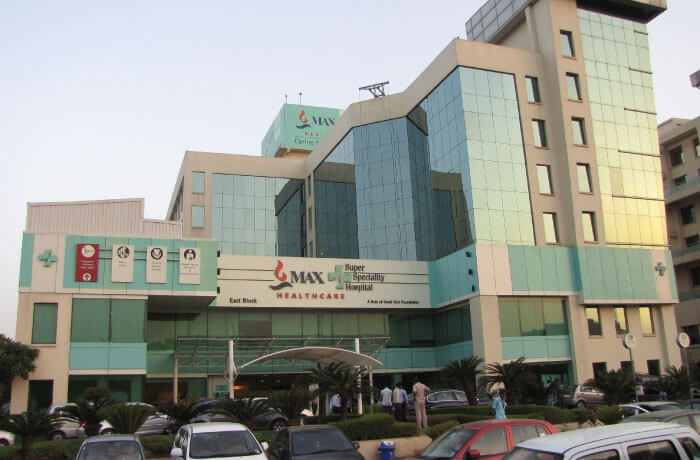Opthamology
Ptosis Surgery (Adult) Treatment
Ptosis Surgery
Ptosis surgery treats drooping upper eyelids in adults, restoring eyelid function and appearance. Get expert care and effective solutions for your vision needs.
What is Ptosis Surgery?
Ptosis is drooping of an upper eyelid of one or both the eyes of an individual. The droop may not be noticed slightly, or the lid can descend over the entire pupil of an individual.
Who should undergo the ptosis surgery?
As a person gets older, the levator muscle that lifts their upper eyelid weakens and stretches resulting in the person’s eyelid to sag. If the person has a sagging eyelid that hinders their vision and thus the patients are not able to view properly, ptosis surgery can be an effective treatment for treating these sagging eyelids. Ptosis surgery can also be done to make a person look younger if one of their eyelids has begun to sag or if there is a difference in the height of their eyelids.
Symptoms and Signs of Ptosis
- The most visible sign of ptosis is the drooping of an upper eyelid of the eye/ eyes.
- Depending on the severity of the lid droops, people with ptosis may have difficulty in viewing.
- Another sign that an individual has ptosis is that sometimes he/ she tilt their respective heads back to try to view under the lid or the person has to raise their eyebrows repeatedly to try to lift the eyelids so that they can view properly.
- The degree of droopiness varies from person to person.
- If people think that they may have ptosis, they must compare their recent photo of their face with one that has been taken 10 to 20 years back, and the people likely see a difference in their eyelid skin.
- Ptosis can look quite identical to the dermatochalasis, which is a group of connective tissue diseases that results in the skin to fold and hang. These connective tissue diseases are associated with less than normal elastic tissue formation.
What are the risks involved?
- After ptosis surgery, the patient’s eyelids may not appear symmetrical, even though the eyelids are positioned higher than the eyelids were before the surgery.
- It is very rare that movement of the eyelid may be affected as well.
- It is very vital for the patients to choose their surgeon carefully since the poorly performed operation could result in an undesirable appearance or in the dry eyes from the lifted eyelids not closing completely.
- Before the patients agree to ptosis surgery, the patients must ask how many procedures the surgeon has performed in the past.
- Also, the patients must also ask the surgeon to view before and after photos of the previous patients who have been operated on, and the patients must also ask the surgeon if the surgeon can talk to the patients and share any of the experience regarding the surgery.
Causes of Ptosis
- The very common cause for ptosis in adults is gradual, age-related stretching of the aponeurosis tendon called involutional ptosis. The levator muscle itself is not affected with age and so the movement of the eyelid from looking up to down remains active.
- Wearing the contact lens for a very long time can result in ptosis, perhaps because of the repeated removal and insertion of the lens that results in stretching of the tissues.
- Sometimes ptosis follows other eye surgery or an injury to the eye.
- The eyelid may droop due to a problem in the nerve supply to the levator muscle in the eye.
- Congenital ptosis (present since birth) is generally due to a poorly developed levator muscle present in the eye.
%201.png) What does ptosis surgery procedure involve?
What does ptosis surgery procedure involve?
- The ptosis surgery is generally done under a local anaesthetic.
- The operation generally takes at least 45 minutes and can last to 90 minutes.
- The duration usually depends on whether the surgery involves both of the patient’s upper eyelids.
- The doctors will generally make an incision on the natural skin crease of the patient’s eyelid.
- The surgeons will place stitches in the levator muscle for strengthening its attachment to the patient’s eyelid and for adjusting the height of the patient’s eyelid.
Ptosis surgery Recovery Time
- The patients should be able to go home after a few hours of the surgery.
- The patients should not get their eyelid wet; the patients should perform any strenuous exercise or bend down until the stitches are being removed.
- The patients should not wear eye make-up or drink alcohol for at least a week or so, and they must keep their face out of the sun.
- The patients must perform regular exercises; this should help them to return to their day to day activities as soon as possible.
- Before the patients start exercising, they must ask their GP or their healthcare team for advice.
- The results of ptosis operations last for a very long time.
- The patient’s face will still continue to age but they will always appear younger than if they had not had surgery.
Ptosis Surgery Before and After
Before Surgery
- Appearance of Drooping Eyelids
- Pre-Surgical Evaluation
After Surgery
- Immediate Post-Surgery Appearance
- Vision Improvement
- Recovery Phase
What are the benefits of ptosis surgery?
The position of a person’s eyelid will be improved and the patient’s face will look much younger. If a person’s eyelid is interfering with their vision, their vision will improve.
Are there any alternatives to this surgery?
Ptosis surgery is the only effective way of tightening the levator muscle. Ptosis props, fitted to the glasses, can keep a person’s eyelid lifted up, but ptosis props can be awkward to wear and may not treat the problem.
Factors Affecting Ptosis Surgery Cost
The ptosis surgery cost can vary greatly depending on many factors. Here are the main factors affecting the cost of the process:
- Surgeon’s Expertise
- Location of the Surgery
- Type of Facility and Hospital
- Severity of Ptosis
- Type of Anaesthesia Used
- Pre-Surgery Consultations
- Diagnostic Tests
- Post-Surgery Care
- Follow-up Visits
- Hospital Stay
Best Hospitals for Ptosis Surgery
Artemis Hospital, Gurgaon
Medanta The Medicity, Gurgaon
Fortis Memorial Research Institute, Gurgaon
Max Hospital, Saket
BLK-Max Super Speciality Hospital, New Delhi
Best Doctors for Ptosis Surgery
Dr. Sameer Kaushal
Dr. Sheetal Bakshi
Dr. Anita Sethi
Dr. Tarun Kapur
Dr. Vivek Garg
Why Choose GetWellGo for Ptosis Surgery?
Choosing GetWellGo for ptosis surgery offers many benefits due to their popular healthcare services.
Here are some reasons why it could be a good choice:
- Expert Surgeons
- State-of-the-Art-Facilities
- Comprehensive Care
- Visa Assistance
- Airport Pickup
- Language Interpreters
- Accommodation Arrangements
- Affordable Pricing
- Post-Surgical Support
FAQ
1. What are the benefits of ptosis surgery?
- Effective eyesight: Fallen eyelashes can block your vision. The surgery can restore the eye to its normal position, improving vision.
- Example of Eye Enhancement: It can enhance the look of the eyes by lifting the eyes to make them look fresher and more subtle.
- Improved self-esteem: People often feel more confident after surgery due to improved aesthetic and functional results.
- Long-term results: If the surgery is successful, the results are often permanent, especially if ptosis is caused by age or muscle weakness
2. What is the ptosis surgery success rate?
- High success rate: Ptosis surgery usually has a high success rate of 90-95%. Success depends on the severity of the ptosis, the surgical technique, and the patient’s clinical course.
- Few complications: Serious complications are rare. The most common issues are temporary swelling, bruising, or mild asymmetry that resolves over time.
3. What is the recovery time for ptosis surgery?
- Quick recovery (1-2 weeks): Most patients can resume activities within 1-2 weeks. The eyelids may be slightly swollen and puffy at this point.
- Full recovery (4-6 weeks): Although the initial treatment takes two weeks, full recovery and final results can take up to 4-6 weeks.
- Postoperative care: You will be advised to follow specific care instructions, such as avoiding strenuous tasks, keeping the area clean, and using prescription eye drops to support healing.
TREATMENT-RELATED QUESTIONS
GetWellGo will provide you end-to-end guidance and assistance and that will include finding relevant and the best doctors for you in India.
A relationship manager from GetWellGo will be assigned to you who will prepare your case, share with multiple doctors and hospitals and get back to you with a treatment plan, cost of treatment and other useful information. The relationship manager will take care of all details related to your visit and successful return & recovery.
Yes, if you wish GetWellGo can assist you in getting your appointments fixed with multiple doctors and hospitals, which will assist you in getting the second opinion and will help you in cost comparison as well.
Yes, our professional medical team will help you in getting the estimated cost for the treatment. The cost as you may be aware depends on the medical condition, the choice of treatment, the type of room opted for etc. All your medical history and essential treatment details would be analyzed by the team of experts in the hospitals. They will also provide you with the various types of rooms/accommodation packages available and you have to make the selection. Charges are likely to vary by the type of room you take.
You have to check with your health insurance provider for the details.
The price that you get from GetWellGo is directly from the hospital, it is also discounted and lowest possible in most cases. We help you in getting the best price possible.
No, we don't charge patients for any service or convenience fee. All healthcare services GetWellGo provide are free of cost.
Top Doctors for Opthamology
Top Hospitals for Opthamology
Contact Us Now!
Fill the form below to get in touch with our experts.




